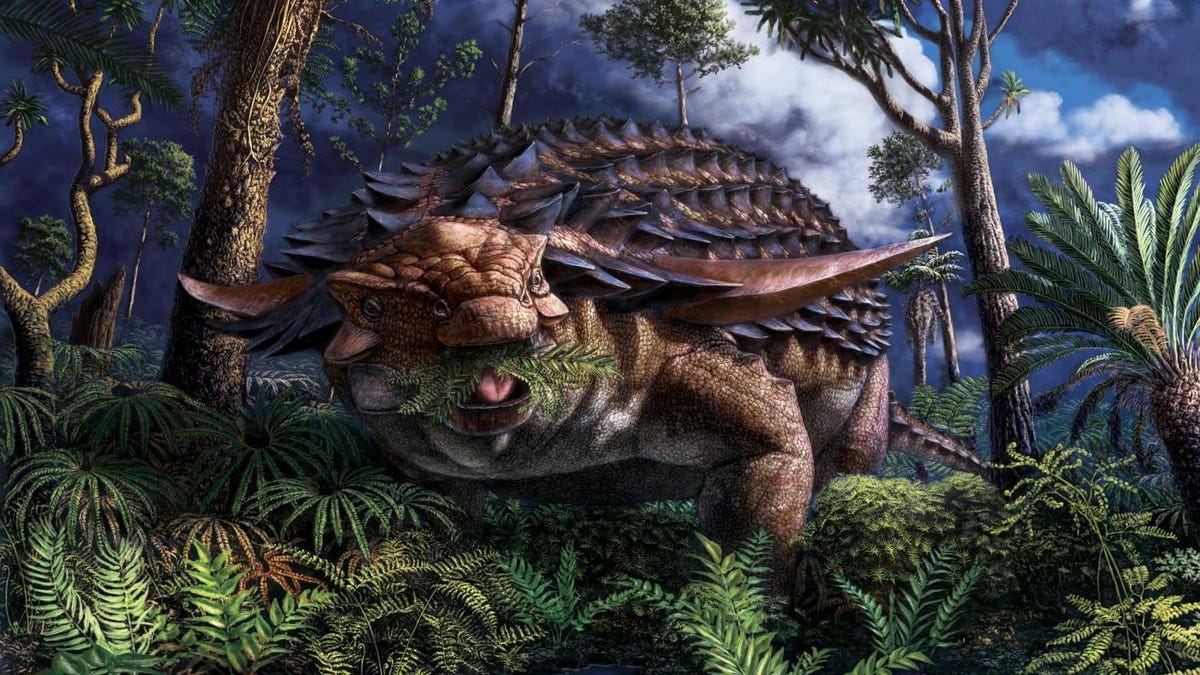Fossilized dinosaur stomach reveals dino's 110-million-year-old last meal
It was a picky eater.
What exactly did a 2,900-pound armor-plated dinosaur eat 110 million years ago? Thanks to meticulous work by scientists, we know the answer. Lots of leafy greens.
A research team uncovered the dietary secrets of a fossilized nodosaur, Borealopelta markmitchelli. "The finding of the actual preserved stomach contents from a dinosaur is extraordinarily rare, and this stomach recovered from the mummified nodosaur by the museum team is by far the best-preserved dinosaur stomach ever found to date," University of Saskatchewan geologist Jim Basinger said in a release Tuesday.
The Royal Tyrrell Museum in Canada has the stunning nodosaur fossil on display.
The researchers published their study in the Royal Society Open Science journal on Wednesday.
The well-preserved fossilized dino was originally discovered in a mine in Canada in 2011 and has been on display at Canada's Royal Tyrrell Museum since 2017. It's named for museum technician Mark Mitchell, who worked to uncover the fossil from the rock it was found in.
Extracting the fossilized stomach contents for study was a painstaking process. "When we examined thin sections of the stomach contents under a microscope, we were shocked to see beautifully preserved and concentrated plant material," said Brandon University biologist David Greenwood.
It turns out the dino was very particular about its food choices. Its last meal was mainly fern leaves, with a bit of stems and twigs mixed in. It gets even more detailed than that. Charcoal found in the stomach suggests it was browsing in an area where ferns were regrowing after a fire.
The researchers even dialed in the season of the dinosaur's death: late spring to mid-summer based on the plants it had eaten.
"This new study changes what we know about the diet of large herbivorous dinosaurs," said the study's lead author Caleb Brown, a paleontologist with the Royal Tyrrell Museum.
It's stunning what one meal can tell us about a time period millions of years in the past.


